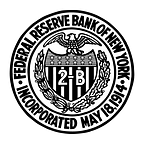Financial Innovations Spur Growth in Solar Power
Claire Kramer Mills and Edison Reyes, Communications and Outreach
Solar power installations in residential homes have long been a luxury good, with high upfront costs creating an insurmountable hurdle for low-income homeowners, and incentives that leave out renters.
That’s changing.
For instance, California regulators recently voted to require builders to include solar power and battery storage in many new commercial structures as well as high-rise residential projects.
“Big changes require everyone to play a role,” said David Hochschild, chair of the California Energy Commission, according to a New York Times report on the plan. “We all have a role in building this future.”
Part of that role will be building innovative financing models that make solar power more accessible. Making solar affordable for low-income families is important because the average annual utilities expense for a U.S. household is $2,955, and the average monthly bill is $316. Utilities are one of the largest expenses for the average U.S. household, alongside housing and transportation.
In addition to the potential to lower energy bills for low-income families, solar power could play a role in improving air quality as it does not produce greenhouse gases. Low-income neighborhoods are more likely to be exposed to more air pollution than wealthier neighborhoods; affordable solar could play a role in improving the health of communities.
The New York Fed and the Center for Impact Finance at the Carsey School of Public Policy at the University of New Hampshire this spring organized four workshops and a public plenary, Scaling Equitable Solar Finance, in which solar industry stakeholders, project developers, and members of the financial sector discussed how community-focused banks and financial institutions can finance solar installations in low-income communities and communities of color.
The discussions examined how low- and moderate-income people, particularly people living in manufactured or multifamily housing, can benefit from renewable energy and reduce their carbon footprint. The discussions also explored the current limitations on financing solar projects and the potential opportunities to drive down project costs that would otherwise make alternative energy cost-prohibitive.
Here are some of the financing tools discussed and examples from the field:
Solar Power Purchase Agreement: A financial agreement in which a financing company buys and maintains solar panels and the customers pay a fixed rate, usually lower than the local utility’s, for the electricity generated. At the Mascoma Meadows development in New Hampshire, community-owned solar yields another benefit: The local utility buys the power generated and cuts the community owners a check each month.
One challenge in this area is that there’s no guarantee low-income households will save money in the long run, given shifts in energy pricing due to demand amid unpredictable climate changes. Communities may also find legal limitations across states in allowing solar power purchase agreements.
Solar Investment Tax Credit: This federal tax credit is available to homeowners and commercial businesses as an incentive to purchase a solar photovoltaic system. A provision in an earlier law that allowed for grants rather than credits led to $26 billion in funding for solar projects, generating enough electricity each year to potentially power 8.5 million homes. Advocates say a return to a grant-based system would spur investments in solar.
Community Development Financial Institution (CDFI) Lending: The Federal Reserve’s 2019 CDFI Survey found that less than 6% of CDFIs participated in clean energy financing projects. CDFIs, which are financial institutions with a mission to serve low- and moderate-income people, could play a much larger role in this sector. Some have already started: Enterprise Community Loan Fund provided the funding for the nation’s first community solar project owned by a housing authority.
Philanthropy: Philanthropic organizations can play a part in seeding new clean energy ideas and testing potential solutions. For example, the Kresge Foundation in metro Detroit has begun financing solar projects in low- and moderate-income communities. It established the Financing Resilient Power Initiative, a $3.3 million loan-guarantee program to accelerate market development of solar-plus-storage systems by reducing the risk of default to lenders.
Together, these avenues mean solar power is increasingly accessible across a wider range of income levels and housing types. In the past decade, solar installations of residential homes, commercial buildings, and utility-scale solar facilities have grown significantly year after year, but that growth hasn’t happened equitably.
“Studies have shown that even controlling for home ownership and income, communities of color lack access to rooftop solar,” said Shalanda Baker, a deputy director at the U.S. Department of Energy, at the plenary session. “We have to increase access to low-cost capital in disadvantaged communities…so we must think about innovations that highlight and leverage those different relationships.”
The New York Fed is committed to understanding and exploring new ideas and strategies for issues that have an impact on the financial well-being of low- and moderate-income households.
Read more in the Scaling Equitable Solar Finance White Paper produced by the Carsey School of Public Policy at the University of New Hampshire and watch our event on financing equitable solar.
The views expressed in this post are those of the contributing authors and do not necessarily reflect the position of the New York Fed or the Federal Reserve System. New York Fed content is subject to our Terms of Use.
